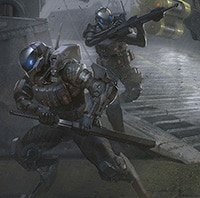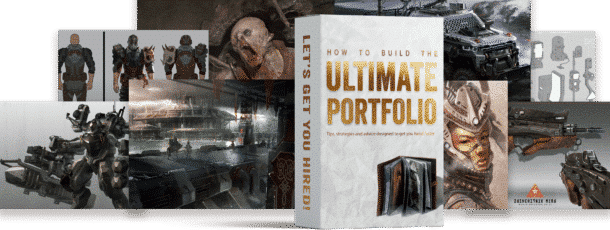Here are a few short answers to some of the most frequent questions I get asked by students about various types of hardware used for concept art.
Do you know a good drawing tablet for my computer that I can get around the $100-$200 range?
Yes and no. There are several cheap/ generic tablets out there, but from what I’ve seen, they all have quirks or drawbacks of some kind. Even some of the student versions of professional tablets (like the Wacom Bamboo) can offer a less than perfect drawing experience. Therefore, when possible, I believe that it is better to spend a little more money to purchase the industry standard tablet (Wacom Intuos/ Cintiq) and consider it an investment in your future, than to compromise and purchase a sub-par product. Even if you can’t afford the latest greatest Wacom product, you may be able to afford the last generation or two of their tablets. Or consider buying it used or refurbished.
Personally, I like drawing with traditional media (pen/markers/paint), but I see a lot of concept art online is done digitally. I own a Wacom Cintiq and know how to do digital paintings in Photoshop, but I am way faster with pen and paper so the majority of my drawings are done manually. Should I be switching over to digital, or does traditional media still have a place in video game design?
I believe that whatever works the fastest, whichever one you are most comfortable and efficient at using, or whichever one gives you the best end result is the medium that you should choose. This all depends on your task at hand, so the medium you choose may change from assignment to assignment. Being open to all kinds of mediums is probably best. In my experience however, I mainly work digitally because I like “UNDOs” and scanning in loose pieces of paper is a hassle. You will have to develop your own preference. Occasionally I’ll have trouble with the photoshop pen pressure not working, but for most digital artists it’s a quick fix and doesn’t affect your overall flow.
Also keep in mind that the work you see displayed on online galleries, is just that: for show. It doesn’t paint an accurate picture of what concept art is.
For example: when dealing with clients I give them all them the same speech. I say: “Hey, I can make this one image super sexy with lots of polish and lens flares,.. but it will take a week. Or I can bang out 3 super quick dirty concepts in a day and we can polish from there. Which do you want?….”.
Guess what they say 10 out of 10 times………. YUP: Quick and dirty. Because ultimately its not about the render or the finish. Its about the ideas. And that is what the client is paying you for: your brain. So they get more bang for their buck when they can see more ideas.
That was my long-winded way of saying the same thing I said in the first sentence. You’re welcome.
What medium is the most relevant for concept design?
In my opinion, there is no relevant medium. Every medium and process has its advantages and disadvantages; use whatever tool you can to get the job done as best and as fast as possible. You should also keep in mind that there are things you can do with traditional mediums that computers will never be able to fully emulate, just like there are digital manipulations and happy accidents that occur on the computer that would take you forever to replicate by hand. By being open to all mediums, you will increase work-flow productivity and stave off boredom.
If you have questions that are not answered here, send a email to eliott@eliottlillyart.com. It may take some time, but I will do my best to respond.


